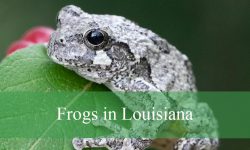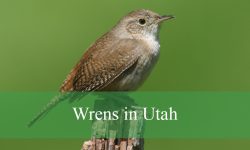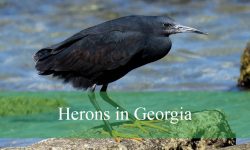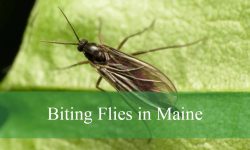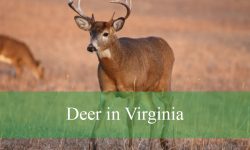Bison have long been an iconic symbol of the American Great Plains, embodying the rugged wilderness and rich history of the region. Among all the states where bison roam, South Dakota stands out as a particularly special place for these majestic creatures. The story of bison in South Dakota is not only about their impressive size or presence but also about how these animals have become a cornerstone of cultural heritage, conservation efforts, and ecological balance. This article delves into the unique aspects of bison in South Dakota, uncovering why these animals hold such significance and what makes their presence in this state truly extraordinary.
South Dakota’s landscape offers a remarkable habitat that supports some of the largest free-ranging bison herds in the United States. From the rolling prairies of the plains to the rugged terrain near the Badlands, bison have adapted and thrived for centuries. Unlike many other places where bison exist only in controlled or enclosed spaces, South Dakota provides vast expanses where they roam relatively freely, maintaining natural behaviors and ecological roles. This combination of history, environment, and ongoing preservation makes South Dakota an essential location to explore when considering the uniqueness of bison in America.
Beyond their physical and environmental presence, bison in South Dakota carry deep cultural and spiritual importance, especially to Native American tribes who have revered the animal for generations. This connection between the people and the bison forms a significant part of the state’s identity. In recent decades, South Dakota has also been at the forefront of efforts to restore bison populations, balancing conservation with sustainable management and public engagement. Together, these factors combine to create a story about bison in South Dakota that is rich, multifaceted, and unlike anywhere else.
The Historical Significance of Bison in South Dakota
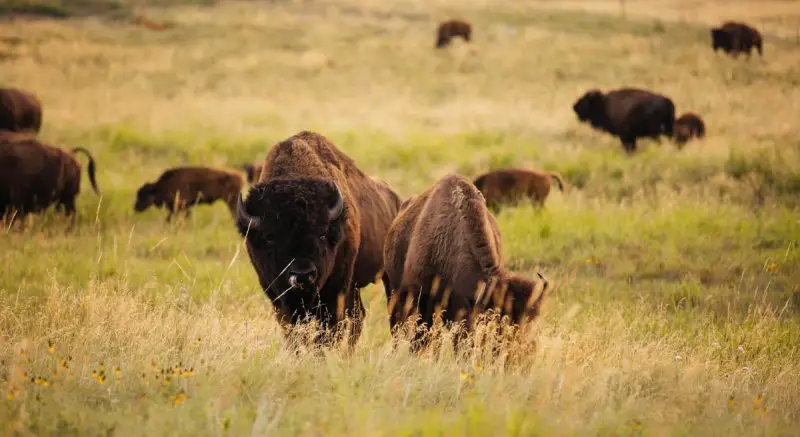
The Legacy of the Plains and the Bison’s Role
The history of bison in South Dakota is deeply intertwined with the story of the Great Plains themselves. Once numbering in the tens of millions across North America, bison were the dominant large mammal species on the continent. In South Dakota, bison were central to the ecosystem and to the cultures of indigenous peoples. The vast herds shaped the landscape by grazing, promoting plant diversity, and creating habitats for other species. Their presence helped maintain the health of the prairies that stretch across the state.
Historically, the bison were also vital to Native American tribes such as the Lakota, Dakota, and Nakota Sioux. These communities depended on bison for food, clothing, shelter, and tools, making the animal an essential part of their daily life and spirituality. The near-extinction of bison in the late 19th century due to overhunting and westward expansion devastated both the species and the indigenous cultures connected to them. However, South Dakota has played a significant role in the recovery of bison populations, serving as a refuge and symbol of resilience.
The Near-Extinction and Revival
The late 1800s were a dark time for bison in South Dakota and across North America. Massive commercial hunting, habitat loss, and government policies aimed at undermining Native American livelihoods pushed bison to the brink of extinction. From millions, the population plummeted to just a few hundred animals by the turn of the century. South Dakota’s open spaces became critical areas for the species’ survival and eventual revival.
Conservation efforts in South Dakota began early, with ranchers, government agencies, and Native American groups collaborating to protect and reintroduce bison herds. One of the most notable conservation successes is found in the Buffalo Gap National Grassland and Custer State Park, where herds have been managed to maintain genetic diversity and ecological health. This revival story is unique because South Dakota managed to keep free-ranging herds and restore them in a way that balances preservation with public access and education.
The Ecological Importance of Bison in South Dakota
Bison as Ecosystem Engineers
Bison are often described as “ecosystem engineers” because of their ability to shape the environment around them. In South Dakota, this role is particularly evident across the mixed-grass prairie and badlands landscapes. Their grazing patterns help control invasive plant species and encourage the growth of native grasses, which in turn supports a wide variety of wildlife, from birds to insects.
Unlike cattle, bison tend to graze in a patchy, rotational manner, which allows plant communities to recover. This natural grazing regime maintains a healthy prairie ecosystem that is crucial for soil preservation and water quality. Furthermore, bison wallowing behavior creates depressions in the land that collect water and provide habitats for amphibians and other small creatures, increasing biodiversity in these areas.
Maintaining Prairie Health in South Dakota
Prairies are among the most endangered ecosystems in North America, with much of their original range converted for agriculture or development. In South Dakota, bison herds help protect the remaining prairie lands by preventing woody plants from encroaching and by recycling nutrients through their natural behaviors. Their presence promotes a dynamic balance that supports many species dependent on open grasslands.
South Dakota’s efforts to conserve bison also contribute to climate resilience. Healthy prairies sequester carbon in their soils, reducing greenhouse gases. Bison grazing helps maintain this process by promoting deep-rooted native plants. This ecological service is not only vital for the local environment but also for the broader fight against climate change, making bison conservation an environmental priority in the state.
Cultural and Spiritual Connections to Bison
Bison in Native American Traditions
For many Native American tribes in South Dakota, bison are much more than animals—they are sacred beings embodying the spirit of the plains. The Lakota and other Sioux peoples have ceremonies, stories, and art centered around the bison, reflecting its importance in sustaining life and culture. Bison are seen as a symbol of abundance, strength, and renewal.
In modern times, tribal nations in South Dakota have taken leadership roles in bison restoration projects. These efforts honor their ancestors while providing economic opportunities and cultural revitalization. For example, the Oglala Lakota’s herd at the Pine Ridge Reservation is managed with traditional values, combining ecological stewardship with spiritual reverence. This integration of culture and conservation is a unique aspect of bison management in South Dakota that distinguishes it from other states.
The Role of Bison in State Identity
South Dakota has embraced the bison as a state symbol, reflecting pride in its natural heritage. The American bison was declared the official state mammal in 1992, highlighting its importance to the state’s identity. Bison appear in local art, festivals, and tourism campaigns, drawing visitors eager to experience these iconic animals in their natural habitat.
Custer State Park’s annual Buffalo Roundup is one of the largest public bison gatherings in the world and a cultural event that attracts thousands. This event not only helps manage the herd but also celebrates the historical and ongoing bond between South Dakotans and their bison. The unique way South Dakota incorporates bison into its cultural fabric strengthens community ties and promotes awareness about wildlife conservation.
Conservation and Management of Bison in South Dakota
Free-Ranging Herds vs. Managed Populations
One of the defining features of bison in South Dakota is the existence of large, free-ranging herds that are managed to mimic natural conditions as closely as possible. Unlike many states where bison live primarily in fenced reserves, South Dakota allows bison to roam across thousands of acres. This practice supports more natural behaviors, social structures, and genetic diversity within the herds.
However, managing these free-ranging populations requires careful planning. Issues like disease control, interactions with cattle, and maintaining genetic health are ongoing challenges. The South Dakota Game, Fish and Parks Department works closely with Native tribes and conservation groups to balance these concerns with the goal of keeping bison populations healthy and sustainable for the future.
Key Bison Herds and Their Stories
South Dakota is home to several famous bison herds that illustrate the state’s unique approach to bison conservation. The Custer State Park herd, numbering around 1,300 animals, is one of the largest publicly owned herds in the world. The park’s management practices aim to preserve the herd’s genetic diversity and promote natural behaviors.
Another significant herd exists in the Buffalo Gap National Grassland, where bison share space with native prairie dogs, coyotes, and other wildlife. This multi-species habitat conservation is rare and highlights South Dakota’s commitment to maintaining ecological integrity. Additionally, tribal herds such as those on the Pine Ridge and Rosebud Reservations add cultural significance to conservation efforts, combining traditional knowledge with modern science.
The Economic and Tourism Impact of Bison in South Dakota
Bison as a Tourist Attraction
The presence of bison in South Dakota has become a major draw for tourists interested in wildlife and natural landscapes. Visitors flock to locations like Custer State Park, Badlands National Park, and Wind Cave National Park to see these impressive animals in the wild. This tourism supports local economies through lodging, dining, guided tours, and outdoor recreation.
The annual Buffalo Roundup in Custer State Park is a highlight event that draws thousands of spectators, offering a rare chance to witness the rounding up and herd management process. This event combines excitement with education, raising awareness about bison conservation and the state’s natural heritage. The economic boost from such events emphasizes how bison play a vital role beyond ecology—they are integral to South Dakota’s community and prosperity.
Bison Meat and Sustainable Farming
Beyond tourism, bison in South Dakota contribute to the local economy through sustainable meat production. South Dakota is one of the top producers of bison meat in the U.S., supplying a growing market interested in healthy, lean, and environmentally friendly protein sources. Bison ranching in the state often follows ethical practices that ensure animal welfare and environmental stewardship.
The resurgence of bison farming has created opportunities for farmers and ranchers, diversifying the agricultural landscape. Many bison producers work to maintain wild traits in their herds while providing products for local and national markets. This blending of wild heritage and modern farming makes bison a unique economic resource in South Dakota, connecting conservation with commerce.
Challenges and Future Prospects for Bison in South Dakota
Addressing Disease and Genetic Diversity
Despite the success of bison restoration in South Dakota, challenges remain. Diseases such as brucellosis and tuberculosis pose threats to bison health and complicate interactions with cattle operations. Managing these risks requires collaboration among wildlife managers, tribal authorities, and agricultural stakeholders.
Maintaining genetic diversity is another ongoing concern. Many bison herds descended from a small number of animals, which limits genetic variability. South Dakota’s approach includes careful herd management and occasional introductions of new genetic stock to prevent inbreeding and preserve the species’ long-term viability.
Expanding Bison Habitat and Public Awareness
Looking ahead, one of the key goals in South Dakota is expanding habitat for bison to roam freely. This involves protecting existing prairie lands, restoring degraded ecosystems, and creating corridors that connect isolated herds. Efforts to involve private landowners and expand public land access are critical to this vision.
Public education also plays a crucial role in shaping the future of bison conservation. By fostering a deeper understanding of the ecological and cultural importance of bison, South Dakota aims to build broad support for preservation efforts. Schools, museums, and community programs work to engage citizens and visitors alike, ensuring that bison remain a living symbol of the state’s heritage.
Conclusion
Bison in South Dakota are more than just animals roaming the plains—they represent a unique blend of history, ecology, culture, and economy that few places in the world can match. From their near extinction to their remarkable revival, South Dakota’s bison tell a story of resilience and hope. The state’s commitment to maintaining free-ranging herds, respecting indigenous traditions, and promoting sustainable management sets it apart as a leader in bison conservation.
As you explore South Dakota’s landscapes, seeing bison in their natural environment is an unforgettable experience that connects visitors with the spirit of the American plains. Their role as ecosystem engineers, cultural icons, and economic contributors makes them indispensable to the state’s identity. Understanding what makes bison in South Dakota so unique helps us appreciate not only these magnificent creatures but also the broader relationship between humans and the natural world.
FAQs about Bison in South Dakota
What makes bison in South Dakota unique compared to other states?
Bison in South Dakota are unique because they roam in some of the largest free-ranging herds in the United States. Unlike many places where bison live only in enclosed areas, South Dakota offers vast natural habitats such as Custer State Park and Buffalo Gap National Grassland, allowing bison to exhibit natural behaviors. Additionally, South Dakota integrates cultural preservation, especially with Native American tribes, into bison conservation efforts.
How did bison populations recover in South Dakota after near extinction?
The recovery began in the early 20th century through conservation programs, protected reserves, and collaboration between government agencies, private ranchers, and Native American tribes. South Dakota maintained free-ranging herds and established protected areas, which allowed bison populations to increase from just a few hundred to thousands today.
Why are bison important for South Dakota’s ecosystem?
Bison play a critical role as ecosystem engineers by maintaining prairie health through their grazing patterns and wallowing behavior. Their grazing promotes native plant growth and controls invasive species, which supports biodiversity and soil health. This natural balance also contributes to carbon sequestration, helping combat climate change.
How are Native American tribes involved in bison conservation in South Dakota?
Many Native American tribes, including the Lakota, Dakota, and Nakota Sioux, have cultural and spiritual ties to bison. Tribal nations actively manage bison herds on reservations, blending traditional knowledge with modern conservation science. These efforts support cultural revitalization, economic development, and ecological stewardship.
Can visitors see bison in South Dakota, and where are the best places to observe them?
Yes, visitors can see bison in several locations, especially in Custer State Park, Badlands National Park, and Buffalo Gap National Grassland. Custer State Park hosts an annual Buffalo Roundup event where visitors can watch the gathering and management of the herd, making it one of the best and most popular places for bison observation.
What challenges do bison in South Dakota face today?
Current challenges include disease management (such as brucellosis), maintaining genetic diversity, and balancing bison conservation with cattle ranching interests. Efforts continue to manage these issues through careful monitoring, collaboration among stakeholders, and habitat protection.
How does bison meat production in South Dakota relate to conservation?
South Dakota is a leading producer of sustainable bison meat. Bison ranching in the state often follows ethical and ecological practices, ensuring the animals are raised humanely and environmental impact is minimized. This production supports local economies and encourages continued interest in bison preservation.
What role does bison play in South Dakota’s cultural identity?
Bison are a state symbol and embody South Dakota’s heritage. They appear in local art, festivals, and tourism, and their presence connects residents and visitors to the state’s natural and cultural history. Events like the Buffalo Roundup celebrate this identity while promoting awareness and conservation.

